The three temptations of Christ that occurred at the beginning of His ministry are described in Matthew 4:1-11; Mark 1:12-13; and Luke 4:1-13. The word ‘tempt’ means to try, test, or prove. To seduce or lead toward evil. And to provoke to anger. I personally believe the the Lord was continually tempted in a covert fashion as we all are (meaning they seem natural or ordinary enticings). Unlike the rest of humanity, the Lord never succumbed to any of these enticings. Nevertheless, these three temptations are unique in that Satan personally appears to Jesus.
The scriptures tell us “then was Jesus led up of the Spirit into the wilderness…” (Matthew 4:1). Below is a picture of the Judaean wilderness. The term used in the Bible as ‘wilderness’ is defined as a place were there are no cities or farms. A place of solitude devoid of permanent inhabitants, thus an extreme desert. The Judaean wilderness is on the east side of the Judaean mountains ridge-line. It faces away from the Mediterranean Ocean and therefore is in a rain shadow.
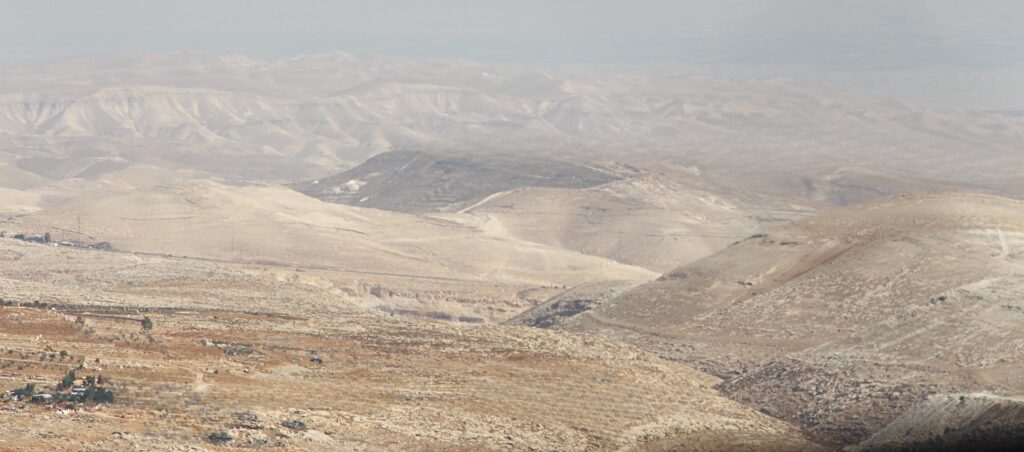
First Temptation. “And when he had fasted forty days and forty nights, he was afterward an hungered. And the tempter came to him, he said, If thou be the Son of God, command that these stones be made bread. But he answered and said, It is written, Man shall not live by bread alone, but by every word that proceedeth out of the mouth of God” (Matthew 4:2-4). The Lord is here quoting, “man doth not live by bread only, but by every word that proceedeth out of the mouth of the Lord doth man live” (Deuteronomy 8:3). Below is a photo of an example of desert rocks that would have made a nice loaf of bread.
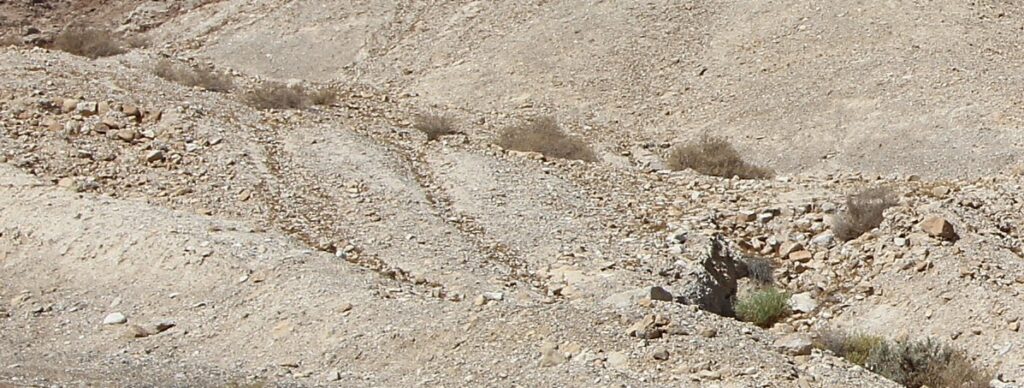
Second Temptation. “Then the devil taketh him up into the holy city (Jerusalem), and setteth him on a pinnacle of the temple, And saith unto him, If thou be the Son of God, cast thyself down: for it is written, He shall give his angels charge concerning thee: and in their hands they shall bear thee up, lest at any time thou dash thy foot against a stone” (Matthew 4:5-6). Satan is quoting Psalms 91:11-12, “For he shall give his angels charge over thee, to keep thee in all thy ways. they shall bear thee up in their hands, lest thou dash thy foot against a stone.” Satan is clever, he knows the scriptures by heart, he just does not obey them.
To which the Lord replied, “Jesus said unto him, It is written again, Thou shalt not tempt the Lord thy God” (Matthew 4:7). The Lord is quoting, “Ye shall not tempt the Lord your God” (Deuteronomy 6:16).
Note, Matthew and Luke have the 2nd and 3rd temptations in reverse order. It makes no difference which order they are in. But to keep things easy, I am following Matthew’s order.
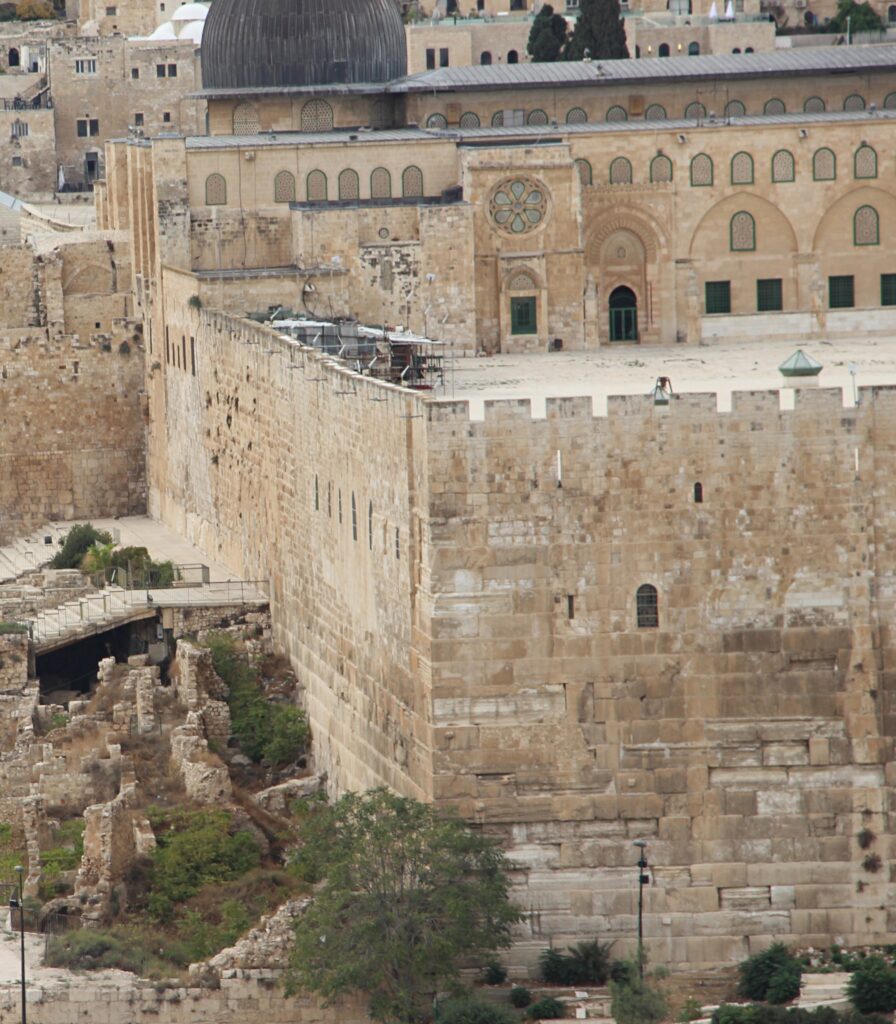
The closest corner of the temple mount is the southeast corner (in the center of the picture above). Some scholars think that this might be the pinnacle of the temple because it is the highest, most dramatic corner of the temple mount.
However, recent excavations have shown that the southwestern corner is a more plausible location.
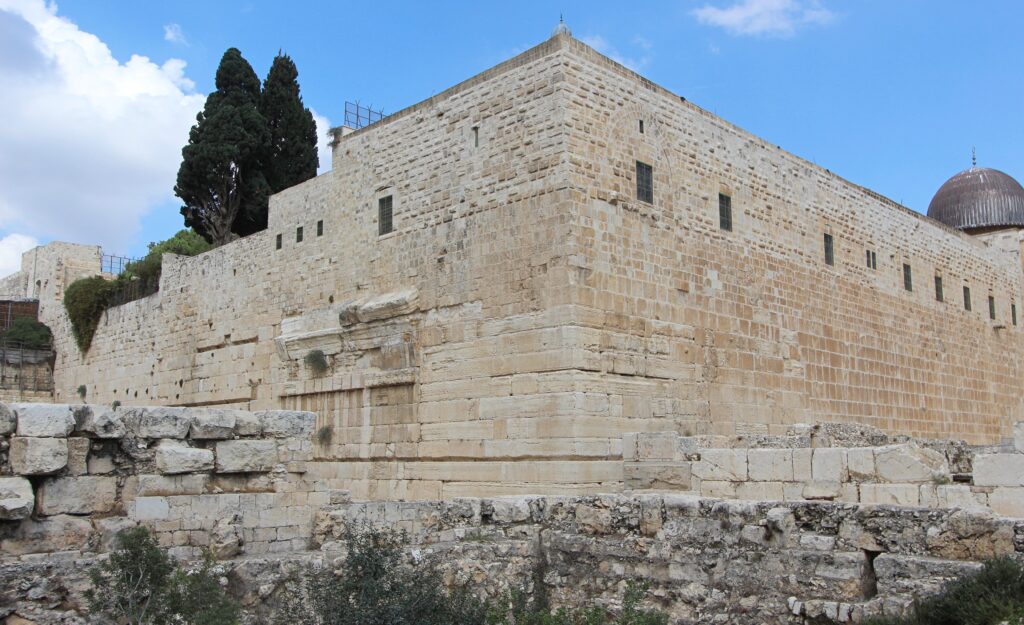
This is the southwest corner of the temple mount. Notice the large stone blocks on the bottom third of the wall. They are original blocks of the Herodian Temple’s retaining wall. Each block weighs several tons. The blocks on the top two thirds were added at later periods as the Romans pulled down the original blocks in 70 AD. The original wall built by Herod was about the same height or maybe a little taller. Archaeological excavations have revealed that atop this corner was a platform from which the Priests would blow the shofar (horn) to mark the beginning and end of each Sabbath as well as holy days. See below photo of the sign posted at the bottom of the southwest corner.
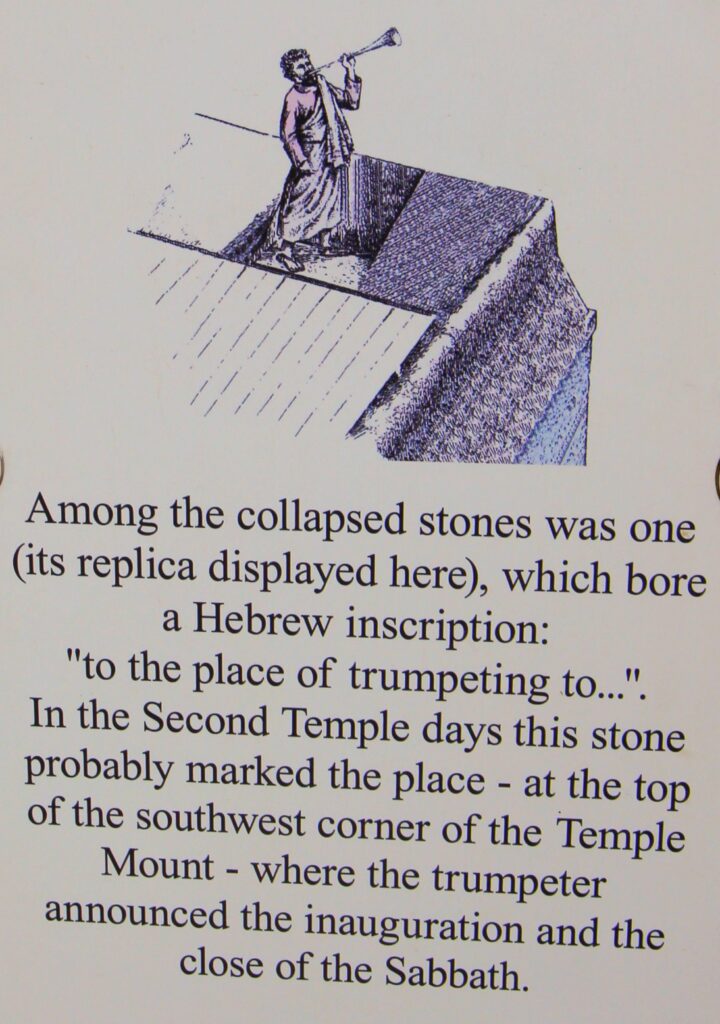
Below is the replica stone of the “place of trumpeting” (written in Hebrew). The original stone is in the Israel Museum, Jerusalem.

Below is the market street that ran along the length of the western wall (about 1 kilometer or 6/10ths of a mile). You can see the paving stones which were edged with curbs. It also had two large draining channels beneath the street. Importantly, there were shops on both sides of the street. Because of this the temptation included the Lord not just proving to himself that he was the Messiah, but everyone in the market below would witness the angelic miracle. That is why this is a more fitting location. It offered easy access and there were many witnesses. Whereas, the bottom of the other (southeast) corner was outside the city walls.

The above is the two thousand year old market street. Many of the larger temple wall stones that were pulled down are still visible where they fell. The street would have continued beyond the far wall, but it has not been excavated yet.
Third Temptation. “And the devil, taking him up into an high mountain, shewed unto him all the kingdoms of the world in a moment of time. And the devil said unto him, All this power will I give thee, and the glory of them: for that is delivered unto me; and to whomsoever I will I give it. If thou therefore wilt worship me, all shall be thine. And Jesus answered and said unto him, Get thee behind me, Satan: for it is written, Thou shalt worship the Lord they God, and him only shalt thou serve” (Luke 4:5-8).
The Lord here is summarizing two scriptures (and probably more) into one profound statement: “Thou shalt have no other gods before me” (Exodus 20:3). “And thou shalt love the Lord they God with all thine heart, and with all thy soul, and with all thy might” (Deuteronomy 6:5). Deuteronomy 6:5 is part of what is called the Shema, a daily recited prayer, a central affirmation of the Jewish faith by observant Jews. (FYI, the full Shema is Deuteronomy 6:5-9, 11:13-21, and Numbers 15:37-41.)
The Judaean desert cliff face over the Jordan/Dead Sea Valley is traditionally held to be the site of the “high mountain” in Luke 4:5 and Matthew 4:8.
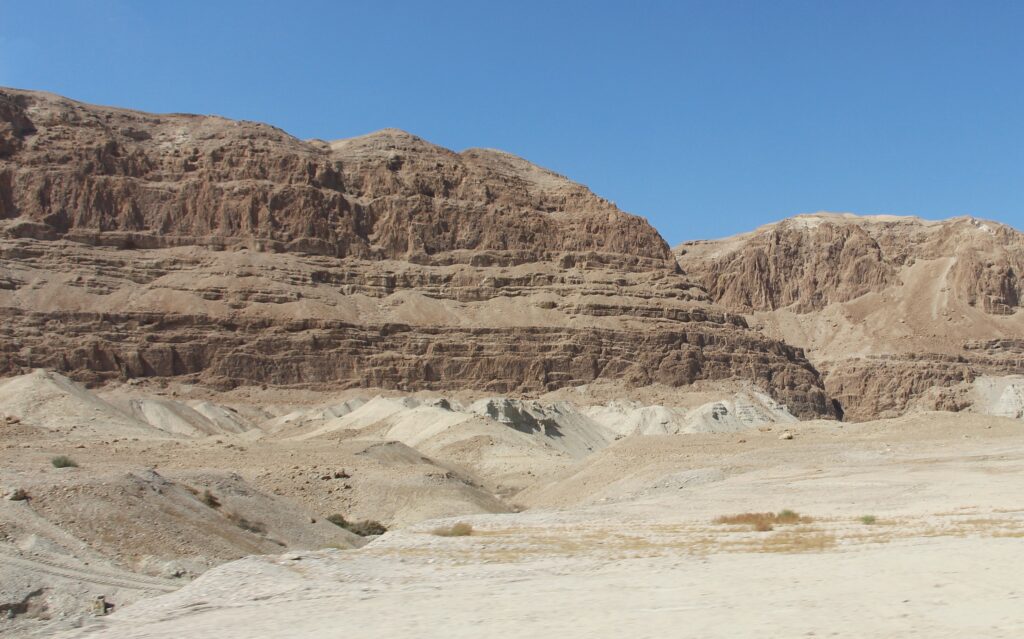
The height of the cliff face varies a little from place to place. But to give you an example, the cliff above Jericho, east of Jerusalem, is about 1,300 feet high. The above photo is the cliff facing the dead sea.
< Previous Post-The Temple Mount of Jerusalem
Next Post on The City Where Jesus and His Family Worked. Plus the Mona Lisa of the Galilee >
Return to Homepage
One response to “The 3 Temptations of Christ”
Well done!!!